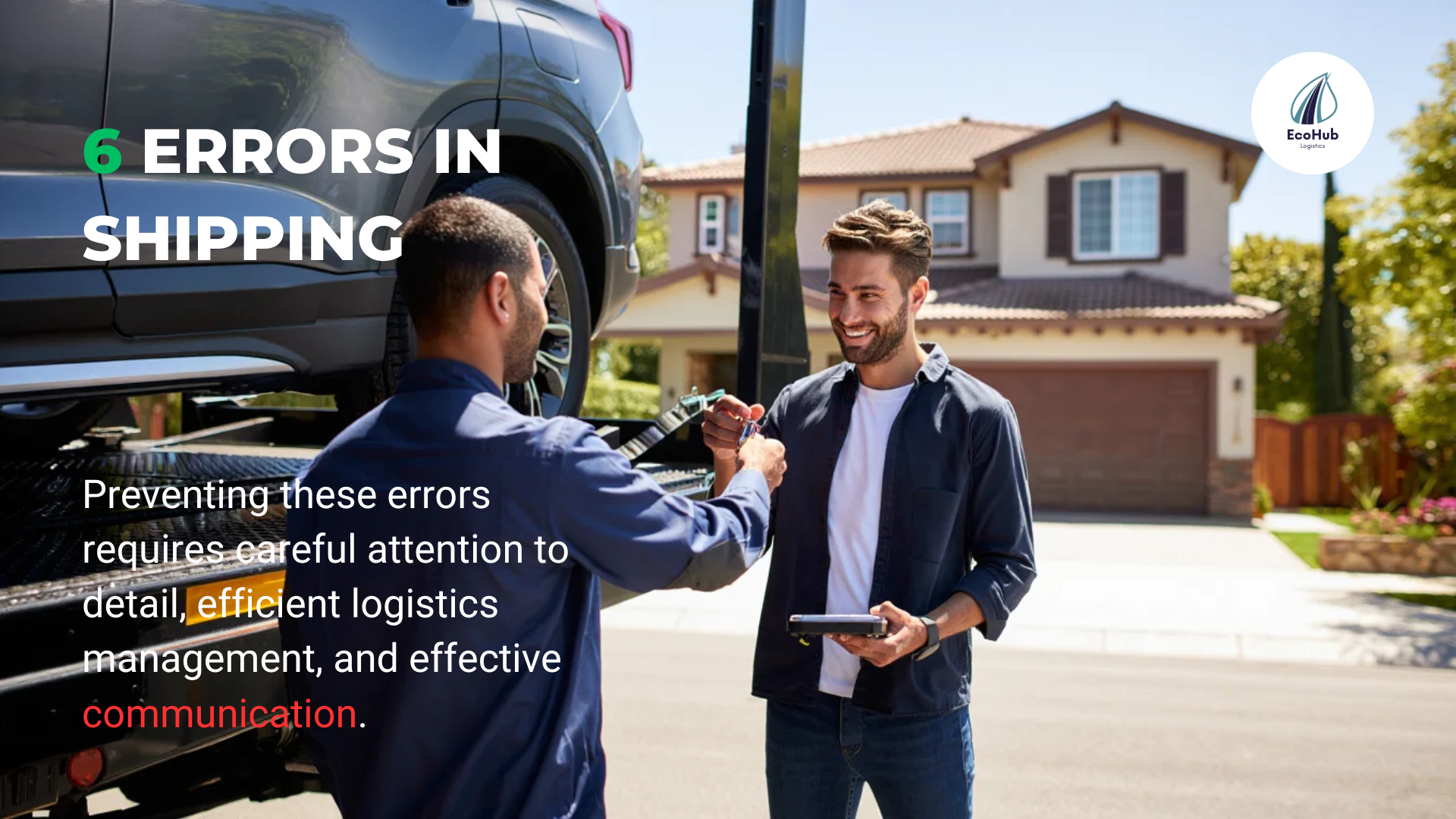Avoid Common Mistakes When Shipping Cars Across the USA
Shipping a car across the United States can be a convenient and efficient way to relocate your vehicle, whether you’re moving, buying a car from out of state, or sending a vehicle to a loved one. However, many customers unknowingly make costly mistakes that lead to delays, unexpected fees, and damaged vehicles.
As experts in vehicle delivery, we’ve seen firsthand how these common mistakes can impact customers. The good news? With the right knowledge and preparation, you can ensure a seamless and stress-free auto transport experience. Here’s what you need to know.
1. Not Researching the Transport Company
Choosing the right auto transport company is one of the most critical steps in ensuring a smooth shipping experience. Many customers make the mistake of opting for the first company they find, often prioritizing cost over reliability. This can lead to serious issues, such as delays, hidden fees, or even damage to your vehicle.
How to Avoid This Mistake:
- Verify Credentials: Always ensure the company is licensed and insured by checking their FMCSA registration and USDOT number. This ensures they meet federal safety standards.
- Read Reviews: Customer reviews can provide valuable insights into the company’s reliability. Look for feedback on delivery times, handling of vehicles, and customer service.
- Ask for References: Don’t hesitate to ask the company for references from past clients. A reputable company should be willing to provide them.
- Get Multiple Quotes: Compare prices and services from multiple providers. Remember, the lowest price may not always offer the best service.
2. Ignoring Insurance Coverage
It’s crucial to understand that the insurance provided by auto transport companies is often limited liability coverage—not full coverage. Many customers assume their vehicle is fully insured, only to find out otherwise if an accident occurs.
How to Avoid This Mistake:
- Ask for Detailed Coverage Information: Request a copy of the company’s insurance policy. Know the coverage limits, deductibles, and what types of damage are included.
- Check Your Own Insurance Policy: Some personal auto insurance policies cover damage during transport, but it’s important to confirm.
- Consider Additional Insurance: If your vehicle is worth more than average, or if it’s a classic or luxury model, consider purchasing additional coverage to fully protect your investment during transit.
3. Leaving Personal Items in the Car
Leaving personal items inside the vehicle is a frequent mistake. Most auto transport companies have strict policies prohibiting the transport of personal belongings due to liability and safety concerns.
How to Avoid This Mistake:
- Remove All Items: Clear your vehicle of any personal belongings—this includes electronics, clothing, or any valuables.
- Understand the Risks: Not only are personal items typically not insured during transport, but they can also add unnecessary weight and lead to extra charges.
- Secure Loose Items: Items left in the car can shift or break during transit, potentially damaging your vehicle or others around it.
4. Not Inspecting the Vehicle Before Shipping
Failing to properly inspect your car before shipping is a mistake that can lead to confusion or disputes over damage. Without documenting the vehicle’s condition before shipping, it’s difficult to prove whether any damage occurred during transport.
How to Avoid This Mistake:
- Take Detailed Photos: Document every angle of the vehicle’s exterior and interior. Make sure to note any existing scratches, dents, or other imperfections.
- Record the Vehicle’s Mileage: Noting the mileage can serve as additional proof in case any damage or mechanical issues arise during transport.
- Do a Thorough Walkaround: Inspect for any obvious signs of damage, such as leaks, tire wear, or loose parts, and address them before shipping.
5. Booking at the Last Minute
Waiting until the last minute to book a car shipment is another common mistake. Not only does this limit your options, but it can also lead to higher prices and a less efficient experience.
How to Avoid This Mistake:
- Plan Ahead: Book your vehicle transport service at least 2-3 weeks in advance to secure the best rates and to give yourself time to research different companies.
- Avoid Peak Seasons: During holidays and peak times, demand for auto transport increases. If you’re shipping your vehicle during these periods, book well in advance to avoid delays and inflated prices.
- Allow Flexibility: Be open to a wider range of pickup and delivery dates. Flexibility can help you get better rates and faster service.
6. Not Understanding Delivery Timelines
Many customers expect their vehicle to arrive within a specific timeframe, but failing to understand the delivery process can lead to disappointment. Auto transport times can vary based on distance, weather, and unforeseen delays.
How to Avoid This Mistake:
- Understand the Shipping Timeline: Shipping a vehicle across the country typically takes 7-10 days depending on the route, whereas local or regional shipments may take 3-5 days.
- Know Your Options for Expedited Shipping: If you need your vehicle delivered by a certain date, ask about expedited shipping options, but remember this will often come with additional costs.
- Allow for Delays: Weather conditions, road closures, or mechanical issues with the transport truck can affect the timeline. Always expect a window of delivery rather than a precise date.
By understanding these common mistakes and following the tips provided, you can ensure that your vehicle is shipped safely, efficiently, and without unexpected issues. Shipping a car doesn’t have to be complicated, but attention to detail is key.

